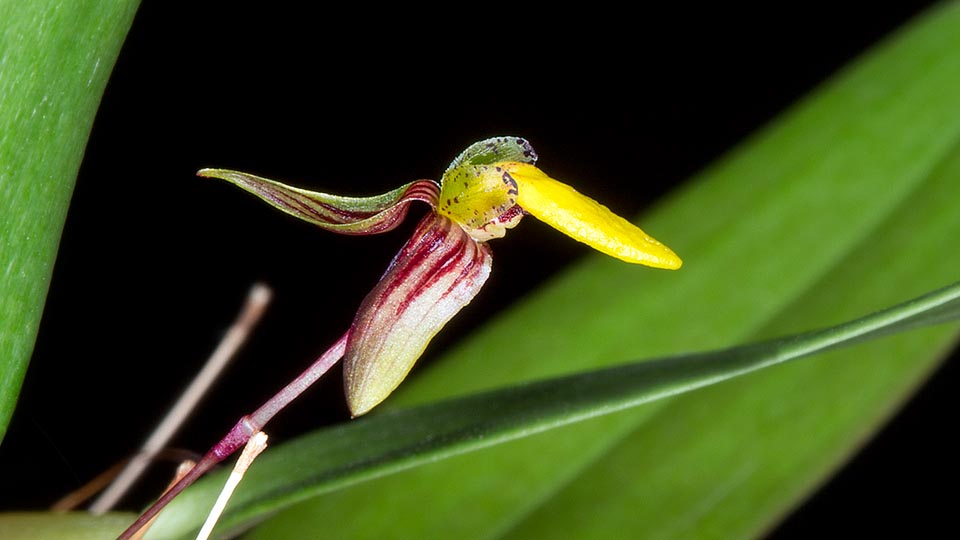Family : Orchidaceae

Text © Pietro Puccio

English translation by Mario Beltramini
The species is native to Andaman Islands, Borneo, Cambodia, Java, Lesser Sunda Islands, Peninsular Malaysia, Philippines (Luzon and Leyte), Singapore (extinct), Sumatra and Thailand where it lives on the trees of the humid forests and on the mangroves from the sea level up to about 1900 m of altitude.
The name of the genus is the combination of the Greek substantives “βολβός” (bolbos) = bulb and “φύλλον” (phyllon) = leaf, with reference to the leaves growing at the apex of the pseudobulbs; the name of the species is the combination of the Latin adjective “tenuis, e” = thin, small and of the substantive “folium, ii” = leaf.
Common names: s̄ingto lîn h̄elụ̄xng (Thai).
The Bulbophyllum tenuifolium (Blume) Lindl. (1830) is a very variable epiphytic species with creeping rhizome, rooting at the nodes with filiform roots, and ovoidal pseuobulbs, 0,6-1,8 cm tall and of 0,3-0,8 cm of diameter, spaced of 1-1,5 cm, of green colour more or less suffused with purple.

Bulbophyllum tenuifolium is an epiphyte with creeping rhizome rooting at nodes of the humid South-East Asia forests, from the sea level up to about 1900 m of altitude © Giuseppe Mazza
Miniature orchid diffused in a vast area of South-East Asia, needs a semi-shaded position, medium-high temperatures in summer, 22-30 °C, slightly lower in winter, with lowest night ones not under the 15 °C, high humidity, 75-85%, and a constant aeration. Regular waterings and nebulizations during the growth period, but avoiding stagnations, more spaced in winter, allowing the substratum to partially dry up, utilizing rain water, demineralized, or by reverese osmosis.

Miniature orchid with ovoidal pseudobulbs of 0,6-1,8 cm of diameter and inflorescences with one single flower of 1,2 cm of diameter © Giuseppe Mazza
The species is reported in the appendix II of CITES (species whose trade is internationally ruled).
Synonyms: Diphyes tenuifolia Blume (1825); Phyllorchis tenuiflora (Lindl.) Kuntze (1891); Phyllorkis tenuifolia (Blume) Kuntze (1891); Bulbophyllum angulatum J.J.Sm. (1908); Bulbophyllum microstele Schltr. (1910); Cirrhopetalum chryseum Kraenzl. (1910); Bulbophyllum chryseum (Kraenzl.) Ames (1911); Bulbophyllum nigromaculatum Holttum (1947).
→ For general notions about ORCHIDACEAE please click here.
